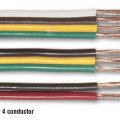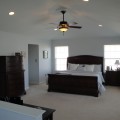 It’s not simply the country’s energy framework that is out of date. The wiring inside numerous homes is likewise out of date, straining to supply our always growing collections of power hungry appliances, lighting, and gadgets.
It’s not simply the country’s energy framework that is out of date. The wiring inside numerous homes is likewise out of date, straining to supply our always growing collections of power hungry appliances, lighting, and gadgets.
The circuits in older homes weren’t intended to power the numerous contraptions of our current lifestyle. The indications of strain may be self-evident as a tangle of additional lines and electrical extensions growing from a solitary outlet – or hiding unseen behind dividers, roofs, and junction covers.
Some wiring issues are simply mild annoyances. In some cases others can pose genuine fire or shock hazards. If you’re purchasing a house (particularly one that is more than 50 years of age), or you’ve never had your wiring examined, its a good idea to contact an authorized electrical repairman to give your home an exhaustive inspection.
They will take a look at the protection on the wires to check whether it’s shriveled and fraying, they’ll search for consumption in the administration board, and they’ll look to check whether a past owner did anything risky with their wiring.
Don’t be worried too much if the inspection turns up to be code infringement. Each time the electrical wiring regulations and code is updated, old wiring is “grandfathered,” on the supposition it was introduced accurately in the first place.
Code just requires you to upgrade wiring in rooms being gut-redesigned or homes being currently built.
To help you survey the condition of your own electrical framework, we’ve listed the 5 most common wiring issues we see, the dangers they pose, and the suggested solutions.
Keep in mind: Anytime you work with wiring, make sure to turn off the circuit from the main switch.
1. Overlamping
What it implies: A light apparatus has a bulb with a higher wattage than the installation is intended for.
Code infringement? Yes.
Risk level: High. The bulb’s excessive heat can sear or melt the attachment and protection on the installation’s wires, which builds the danger of arcing — sparks that bounce through the air starting with one wire then move onto the next — a prime reason for electrical flames. The harm to attachments and wires stays even after the bulb has been taken out.
Solution: Stay inside the parameters recorded on all light installations made since 1985. For more seasoned, unmarked installations, utilize just 60-watt bulbs or smaller.
2. Revealed Junction Box
What it implies: Because an intersection box houses the connections where wires are joined with each other, an individual could accidentally harm the wires or get a shock.
Code infringement? Yes.
Risk level: Minimal. The length of wires aren’t protected.
Solution: Spend a couple dollars to purchase another cover and install it with the screws provided.
3. Excessively Few Outlets
What it implies: Heavy dependence on electrical lines and electrical extensions.
Code infringement? No; grandfathered in. (Today’s codes require outlets inside 4 feet of an entryway and each 12 feet from that point.)
Risk level: Minimal. The thickness of additional cords should be 14-gauge or thicker. (The thicker the wire, the lower the gauge number.) Undersize additional lines (16-gauge or smaller) can overheat and spark a flame if power burdens are excessive.
Solution: Add more outlets. Expect to pay some electrical experts about $100 for every first-floor outlet and twice that for second-floor work. There will probably be a base charge, but cost varies from electrician to electrician.
This work requires cutting gaps in dividers and roofs to snake the wires. A few electrical technicians will fix the holes when the work is complete; others leave the fixing to you.
4. Overwired Panel
What it implies: The board contains a greater number of circuits than its made to handle, in light of the fact that an excess of single-post breakers (one circuit) have been supplanted with pair breakers (two circuits) in one space.
Pair breakers aren’t the same as high-amp twofold shaft breakers, which bring up two openings with one circuit. A name on each circuit board indicates what number of circuits the board can handle.
Code infringement? Yes.
Risk level: Minimal. It may turn into an issue when the house is sold and an inspector looks inside the board.
Solution: Add a sub panel with a couple of additional spaces, or, if you’re arranging real home upgrades, replace your current panel with a bigger model (price may be $500 to $800 depending on the model and installation prices).
5. Aluminum Wiring
What it implies: You have a sort of wiring, utilized as a part of the 1960s and ’70s as a shoddy substitute for copper, that is no longer considered safe.
Code infringement? No; grandfathered in.
Risk level: High. Aluminum erodes when in contact with copper, so connections slacken, which can prompt sparking and flames.
Learn more about aluminum wiring and fixes you can use if you have it.
Solution: Retrofit a dielectric wire nut endorsed for aluminum wire onto each copper/aluminum association in light installations. These nuts have an uncommon oil that stops erosion while keeping up conductivity. Verify that any substitution switches and repositories are marked AL-perf.
For electrical wiring help please contact Conductive Electric at 302-319-4061 or request an estimate here.







